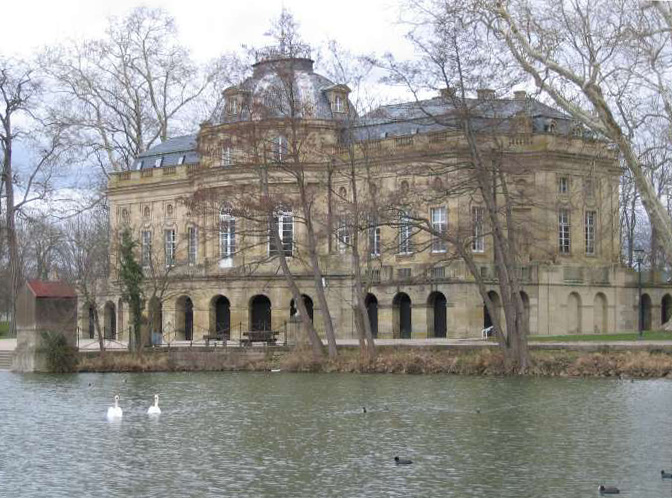|
Karlsschule
Hohe Karlsschule (''Karl's High School'') was the strict military academy founded by Karl Eugen, Duke of Württemberg in Stuttgart, Germany. It was first founded in 1770 as a military orphanage, but then converted into a military academy in 1773 for the duke. Politically the duke was quite unimportant and with this school he wanted to enhance his prestige. In 1770, it was moved to Castle Solitude, and in 1775 into the city. Raised in 1781 by Emperor Joseph II to university status under the name ''Karls Hohe Schule'', it was disbanded after the death of Duke Carl Eugen by his brother Ludwig Eugen, Duke of Württemberg in 1794. The building, situated behind Neues Schloss, was destroyed in World War II. Alumni Friedrich Schiller was one of its alumni.Barbara Schubert-Felmy, ''Die Räuber und andere Räubergeschichten'', Schöningh, 1999. . p. 217. He spent eight years of his life in this academy and suffered a lot in his first years of his stay. At first he was considered an averag ... [...More Info...] [...Related Items...] OR: [Wikipedia] [Google] [Baidu] |
Ernst Franz Ludwig Marschall Von Bieberstein
Ernst Marschall von Bieberstein (2 August 1770 - 22 January 1834) served as Chief Minister (''Staatsminister'') of the Duchy of Nassau between 1806 and 1834. Between 1806 he was one of two chief ministers of Nassau, but after the resignation of Hans Christoph Ernst von Gagern (apparently as an unintended consequence of a new imperial decree), Marschall von Bieberstein became in effect the sole leading politician in Nassau in 1809. During his early years he pursued a liberal course, but as conservatism returned to favour after the fall of Napoleon, his approach became strikingly more "restorationist". Family provenance Ernst (Franz Ludwig) Freiherr Marschall von Bieberstein was born into a protestant family at Wallerstein (approximately 80 kilometers / 50 miles north of Augsburg), a younger son of Conrad Otto Christoph Marschall von Bieberstein (1726–96), an army officer and senior government administrator from Württemberg. and his wife 'Johanna Theresia Henriette ... [...More Info...] [...Related Items...] OR: [Wikipedia] [Google] [Baidu] |
Stuttgart
Stuttgart (; Swabian: ; ) is the capital and largest city of the German state of Baden-Württemberg. It is located on the Neckar river in a fertile valley known as the ''Stuttgarter Kessel'' (Stuttgart Cauldron) and lies an hour from the Swabian Jura and the Black Forest. Stuttgart has a population of 635,911, making it the sixth largest city in Germany. 2.8 million people live in the city's administrative region and 5.3 million people in its metropolitan area, making it the fourth largest metropolitan area in Germany. The city and metropolitan area are consistently ranked among the top 20 European metropolitan areas by GDP; Mercer listed Stuttgart as 21st on its 2015 list of cities by quality of living; innovation agency 2thinknow ranked the city 24th globally out of 442 cities in its Innovation Cities Index; and the Globalization and World Cities Research Network ranked the city as a Beta-status global city in their 2020 survey. Stuttgart was one of the host cities ... [...More Info...] [...Related Items...] OR: [Wikipedia] [Google] [Baidu] |
Ludwig Abeille
Johann Christian Ludwig (Louis) Abeille (20 February 1761 in Bayreuth – 2 March 1838 in Stuttgart) was a German pianist, organist, conductor, music teacher and composer. Life His father was baronial valet and his mother was Christine Louise Abeille, both of whom were employed at the Bayreuth court. Starting at age eleven, he was educated at the Karlsschule in Stuttgart, where his teachers were Antonio Boroni, Ferdinando Mazzanti, and Johann Gottlieb Sämann. In 1782, he became a member of the musicians of the Court at the Duke of Württemberg in Stuttgart. He joined the faculty of Karl's High School (Hohe Karlsschule), a rigorous military academy, in 1786. In 1802, he became concertmaster and later organist of the Court, replacing Johann Rudolf Zumsteeg. In this position, Abeille served as Maestro di Capella to the Duke for several years. In 1815, he became court organist at the court church and director of the Stiftsmusik. He retired in 1832. Ludwig Abeille was married ... [...More Info...] [...Related Items...] OR: [Wikipedia] [Google] [Baidu] |
Friedrich Schiller
Johann Christoph Friedrich von Schiller (, short: ; 10 November 17599 May 1805) was a German playwright, poet, and philosopher. During the last seventeen years of his life (1788–1805), Schiller developed a productive, if complicated, friendship with the already famous and influential Johann Wolfgang von Goethe. They frequently discussed issues concerning aesthetics, and Schiller encouraged Goethe to finish works that he had left as sketches. This relationship and these discussions led to a period now referred to as Weimar Classicism. They also worked together on ''Xenien'', a collection of short satirical poems in which both Schiller and Goethe challenge opponents of their philosophical vision. Early life and career Friedrich Schiller was born on 10 November 1759, in Marbach, Württemberg, as the only son of military doctor Johann Kaspar Schiller (1733–1796) and Elisabetha Dorothea Schiller (1732–1802). They also had five daughters, including Christophine, the eldest. ... [...More Info...] [...Related Items...] OR: [Wikipedia] [Google] [Baidu] |
Gottlieb Schick
Christian Gottlieb Schick (15 August 1776 – 7 May 1812) was a German Neoclassical painter. His history paintings, portraits, and landscapes are characterized by romantic tendencies. Of these, he is best known for his portraits. Life and work He was born in Stuttgart. He studied from 1795 to 1797 at the Hohe Karlsschule under Philipp Friedrich von Hetsch, a follower of Jacques-Louis David.Bernardini, Ingrid Sattel. "Schick, Gottlieb". ''Grove Art Online. Oxford Art Online''. Oxford University Press. Web. 31 Dec. 2014. In 1797–98 he studied under Johann Heinrich von Dannecker, after which he relocated to Paris where he spent 1799 to 1802 in David's studios. Between 1802 and 1811 he stayed in Rome, where he became an important figure in that city's artistic and intellectual circles. He was an especially good friend of Wilhelm von Humboldt and his family. In Schick's last years, his style of Raphaelesque classicism gradually acquired a romantic orientation. In 1809, he was ... [...More Info...] [...Related Items...] OR: [Wikipedia] [Google] [Baidu] |
Johann Georg Kerner
Johann Georg Kerner (9 April 1770 - 7 April 1812) was a physician and a political journalist who became a critical chronicler of the French revolution. Life Provenance and kinships (Johann) Georg Kerner was the elder brother of the poet-writer Justinus Kerner. The brothers were born in Ludwigsburg, a short distance to the north of Stuttgart. Their father, Christoph Ludwig Kerner (1744-1799) was an Oberamtmann (senior government administrator) in Württemberg (like his father before him), a loyal servant of Duke Karl Eugen and a stern father to his sons. Through their maternal grandmother, born Wilhelmine Luise Herpfer (1730-1788) Johann Georg and Justinius Kerner shared an illustrious pedigree. Ancestors included the physicians Johann Bacmeister (1624-1686) and Matthäus Bacmeister (1580-1626) along with the Lutheran theologian and church organist Lucas Bacmeister (1530-1608). Georg was the eldest of his parents' twelve recorded children. ( Justinus was the youngest.) ... [...More Info...] [...Related Items...] OR: [Wikipedia] [Google] [Baidu] |
Joseph Anton Koch
Joseph Anton Koch (27 July 1768 – 12 January 1839) was an Austrian painter of Neoclassicism and later the German Romantic movement; he is perhaps the most significant neoclassical landscape painter. Biography The Tyrolese painter was born in Elbigenalp. Early in his life he was tending cattle. Through the recommendation of Bishop Umgelder (1785), he received academic training in the Karlsschule Stuttgart, a strict military academy. In 1791, he ran away, and traveled through France and Switzerland. He arrived in Rome in 1795. Koch was close to the painter Asmus Jacob Carstens and carried on Carstens' "heroic" art, at first in a literal manner. He etched the pages of Carstens' ''Les Argonautes, selon Pindar, Orphée et Apollonius de Rhode'' (Rome, 1799). After 1800, Koch developed as a landscape painter. In Rome, he espoused a new type of "heroic" landscape, revising the classical compositions of Poussin and Lorrain with a more rugged, mountainous scenery. In 1812, force ... [...More Info...] [...Related Items...] OR: [Wikipedia] [Google] [Baidu] |
Johann Rudolf Zumsteeg
Johann Rudolf Zumsteeg (10 January 1760 – 27 January 1802) was a German composer and conductor. Zumsteeg championed the operas of Mozart in Stuttgart, staging the first performances there of ''Die Zauberflöte,'' ''Don Giovanni,'' and ''Cosi fan tutte''. He also was a prolific composer of ''lieder'' and ballads. His ballads had a great influence on the young Franz Schubert, who imitated a number of Zumsteeg's as studies (some even in exactly the same keys) while he was a teenager. Life and early career Zumsteeg was born in Sachsenflur, Lauda-Königshofen, in a military camp to his father Rudolph Zum Steeg. He received an education at the Karlschule in Stuttgart after the passing of both parents. Zumsteeg was initially admitted as a stucco worker, however his musical aptitude soon allowed him transfer to the music department. There Zumsteeg became intimate friends with Friedrich Schiller. A setting for Schiller's drama, ''Die Räuber'', 1782, is an example of the type of cl ... [...More Info...] [...Related Items...] OR: [Wikipedia] [Google] [Baidu] |
Christian Zais
Christian Zais (4 March 1770 – 26 April 1820) was a German architect and city planner. Zai was born in Cannstatt, studied at the Karlsschule Stuttgart, and was taught by Karl August Friedrich von Duttenhofer and Johann Jakob Atzel. He designed several buildings in the spa city of Wiesbaden. Work Christian Zais' work characterizes the inner city of Wiesbaden with his lasting urban design. Zais designed a number of important buildings in the spa town, including the construction (1808-1811) of the Old Kurhaus Wiesbaden, the Erbprinzenpalais at Wilhelmstrasse (used today as the Chamber of Commerce) in 1813, and the Four Seasons hotel which was destroyed during Allied bombings in 1945. He promoted the use of cheaper materials at the time, including extensive use of rammed earth; some of these constructions remain to this day. 1818 saw Zais develop a city master plan for the "enlargement and beautification of the city"; the plan included surrounding the city's historic district ... [...More Info...] [...Related Items...] OR: [Wikipedia] [Google] [Baidu] |
Johann Christoph Friedrich Haug
Friedrich Haug (Johann Christoph Friedrich Haug, born 9 March 1761 in Niederstotzingen, died 30 January 1829 in Stuttgart) was a German official and poet. Biography Haug is renowned particularly through his large number of epigrams, which he initially published under the name "Hophthalmos" (Sinngedichte, Frankfurt 1791; Epigrrams and Mixed Poems, Berlin 1805). From 1811 to 1817 he was the editor in charge of Cotta's '' Morgenblatt''. With Friedrich Christoph Weisser, he published an epigramatic anthology (Stuttgart 1807–1809, 10 vols.). He also published fables, ballads, and stories. Friedrich Haug was the son of Balthasar Haug, a teacher at the Karlsschule Hohe Karlsschule (''Karl's High School'') was the strict military academy founded by Karl Eugen, Duke of Württemberg in Stuttgart, Germany. It was first founded in 1770 as a military orphanage, but then converted into a military academy in 1773 .... In 1775, Haug attended this institute to study law. In 1784 he bec ... [...More Info...] [...Related Items...] OR: [Wikipedia] [Google] [Baidu] |
Castle Solitude
Solitude Palace () is a Rococo ''schloss'' and hunting retreat commissioned by Charles Eugene, Duke of Württemberg. It was designed by and Philippe de La Guêpière, and constructed from 1764 to 1769. It is located on an elongated ridge between the towns of Leonberg, Gerlingen and Stuttgart in Baden-Württemberg. History Charles Eugene von Württemberg succeeded his father Charles Alexander as Duke of Württemberg in 1737, when he was only nine. The Duchy of Württemberg was ruled by a regency council until 1744, when Charles Eugene reached the age of majority at 16. His reign would be marked by economic difficulty, political strife, and extravagance. By the 1760s, Charles Eugene's policies and ambitions had met with failure. He had failed to achieve increased rank and prestige from the War of the Austrian Succession or the Seven Years' War, and had diplomatically isolated Württemberg because of his jostling and means of acquiring war funds. He had repeatedly withdrawn ... [...More Info...] [...Related Items...] OR: [Wikipedia] [Google] [Baidu] |
Nikolaus Friedrich Von Thouret
Nikolaus Friedrich von Thouret (born Ludwigsburg, 2 June 1767; died Stuttgart, 17 January 1845) was a German architect and designer. Life and work From 1778 to 1788 he was educated at the Hohe Karlsschule in Stuttgart where he trained as a painter. He then attended the Académie des Beaux-Arts (1789–1790) in Paris and studied architecture in Rome (1791–1797). After returning to Stuttgart, he worked for the court in Württemberg as a designer-draughtsman and decorative painter. An early architectural project was the Gothic Revival church of Hohenheim (1797; re-erected 1803 at Monrepos, Ludwigsburg; ruin since the 1940s. With the assistance of Goethe, whom he met in Stuttgart in 1797, Thouret was commissioned to design the décor of the Schloss in Weimar and to renovate the court theatre there (1798–1800). On his return to Stuttgart, Thouret was appointed court architect to Frederick II, Duke of Württemberg (1754–1816), in 1799. He undertook numerous building projects, ... [...More Info...] [...Related Items...] OR: [Wikipedia] [Google] [Baidu] |
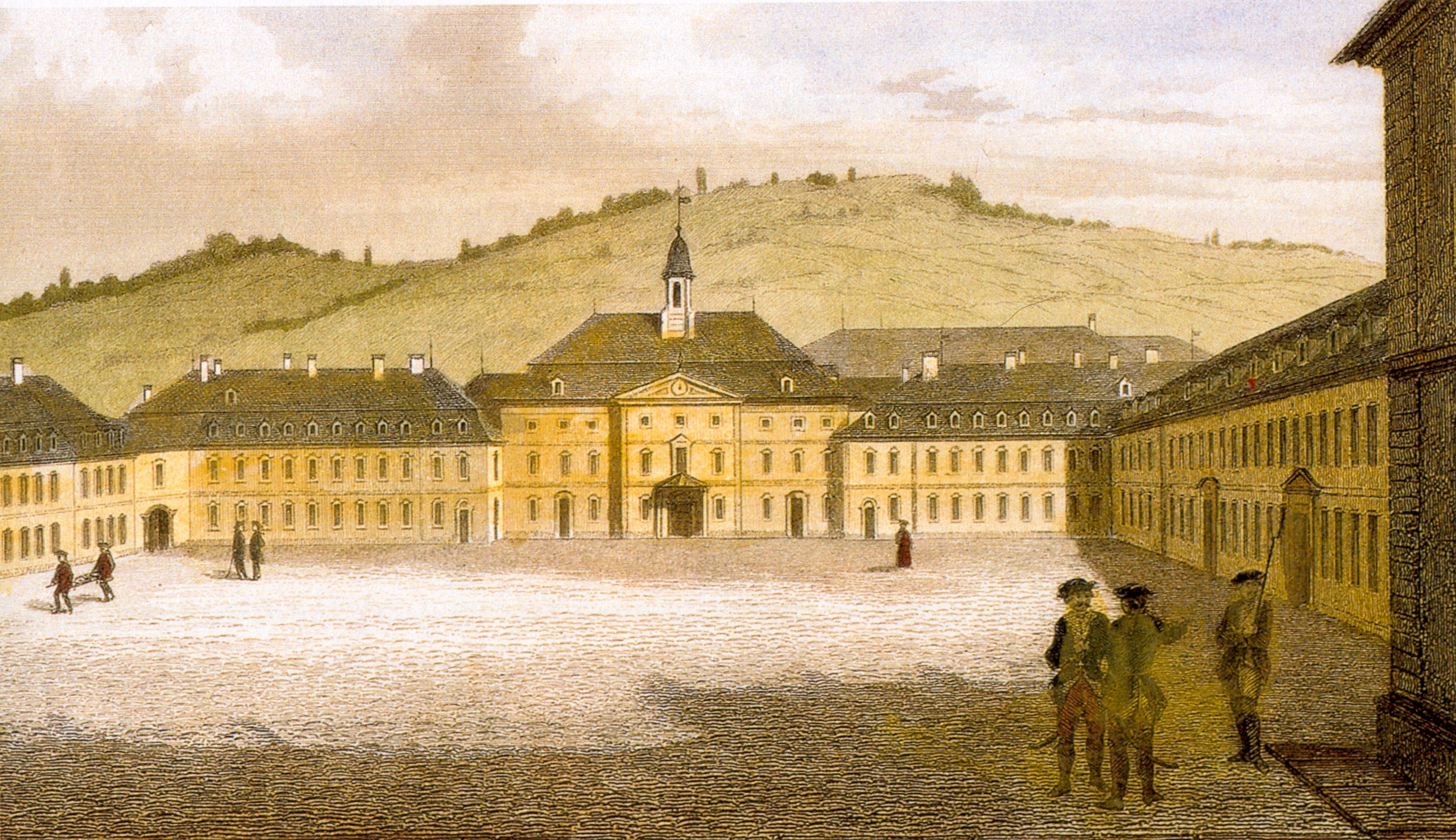



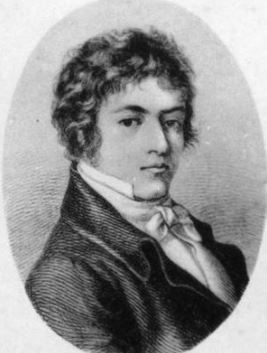
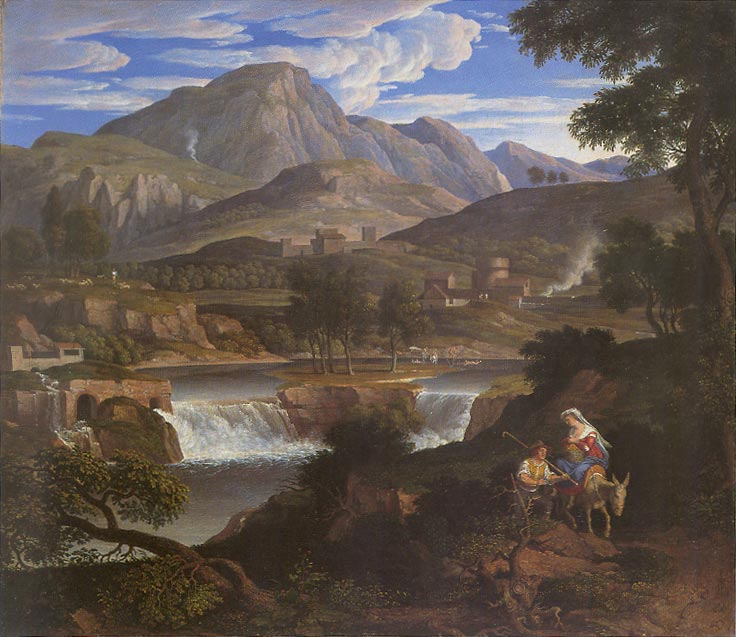

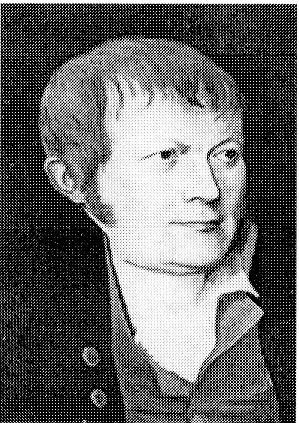
_Mitteltrakt_der_Südseite.jpg)
